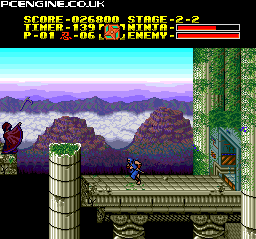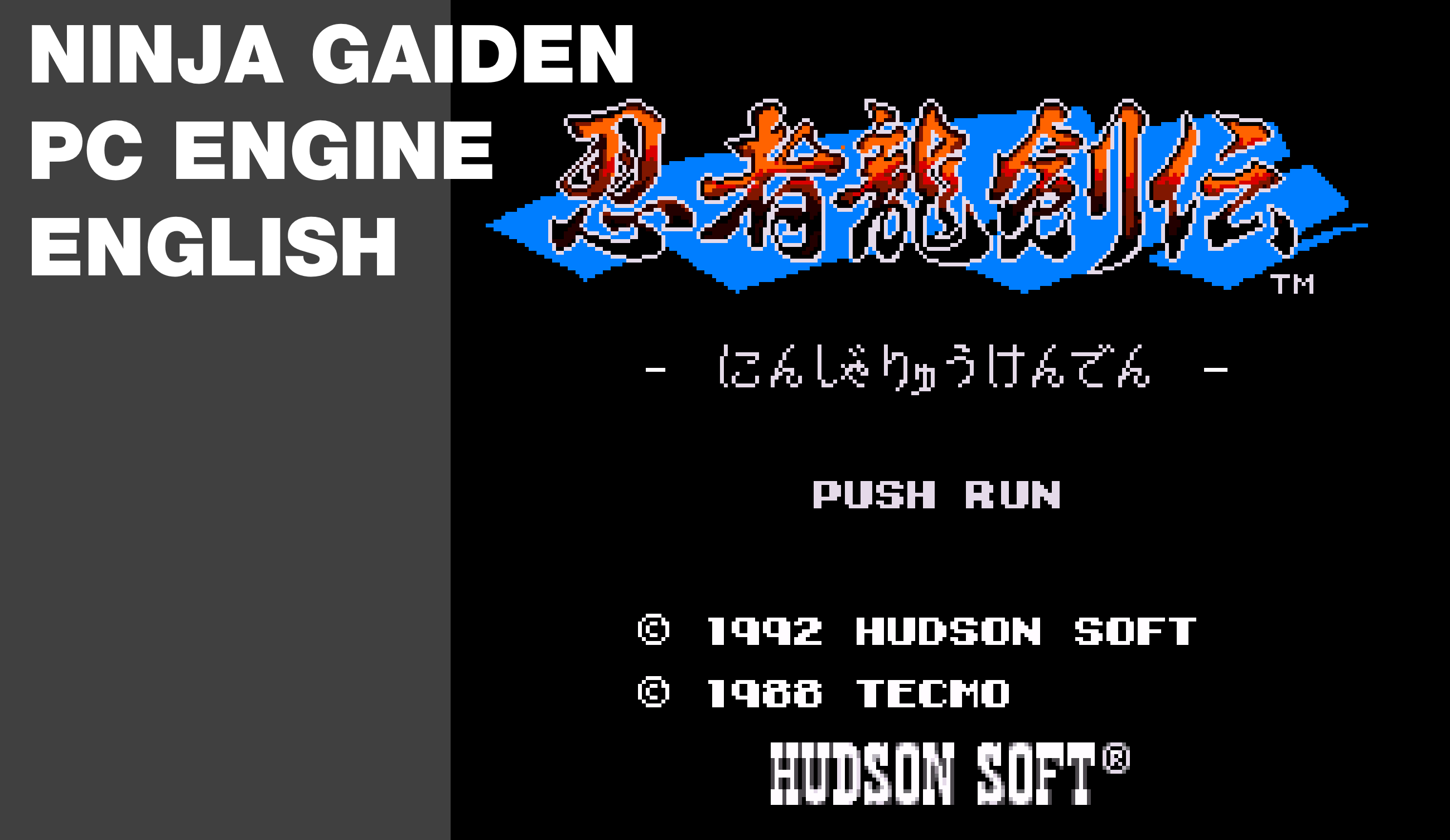
Aside from that, you’d think that if the original compositions still stood, how bad could things be? Well, unbelievably so. Unique versions of the boss theme from the first Ninja Gaiden were used in II and III for their respective boss fights, but in this game those songs were replaced by random stage tunes from the first Ninja Gaiden. The original compositions are all there, for the most part. While on the topic of sound, let’s cover the music for a bit. Add this to gunshots that sound like low key farts, enemy damage that sounds like a shovel scraping against dirt, and a whole lot more, and you have a perfect display of how not to make sound effects in a video game. They aren’t a perfect 1 to 1 match, but they’re way too close for it to be a coincidence.

In particular, the exploding sound effect that plays when you defeat a boss is suspiciously similar to the sound effect for when you die in Atari’s Haunted House. Not all of them, mind you, but several of them. Way too many of this game’s sound effects sound like they were pulled from an Atari 2600. Having played the original games hundreds of times over the years, it wasn’t hard for me to spot things that were out of place, and the sound of the two ninjas’ feet hitting the grass was downright silly. The first thing I noticed was the sound choices, specifically the sound effects. I was willing to overlook the pitiful UI though, because I knew the games themselves would be great. When you boot it up you’re presented with a pretty basic title select screen and some of the grossest electric guitar samples imaginable. Ninja Gaiden Trilogy is a fascinating dumpster fire from top to bottom. How cool were these songs going to sound? And the Super NES was capable of creating some amazing music. Heck, even if they just left the basic sprite work alone and added some parallax scrolling to the backgrounds it would be great. I, for one, couldn’t wait to see and hear what the game was going to be like. They had super cool character and monster designs, excellent graphics by NES standards, and some of the best music on Earth. The Ninja Gaiden games were the total package. If Mega Man and Mario were any indication, playing Ninja Gaiden with the power of the Super NES behind it was going to be something special. Ninja Gaiden was a killer brand that changed the way video games told stories. Okay, maybe the third one wasn’t quite on par with Mega Man 3, Castlevania III, or Super Mario Bros. Ninja Gaiden and its two sequels on the NES were right up there with games like Castlevania, Mega Man, Zelda, and Mario as genuine gaming icons.

With these two compilations in existence, it wasn’t unreasonable for people to get very excited when word of Tecmo’s Ninja Gaiden Trilogy got out. Of course it was only available on The Sega Channel here in the US, but hey, it’s still a cool game. Some of the music choices were a bit strange, and the overall feel wasn’t as tight as the originals were, but they managed to weave them together in a sort of clever story, and they even added a new Wily Tower section at the end where you could combine elements of all three games to fight brand new robot masters. It was an amazing package that brought an unbelievable value to the table.Ĭapcom followed suit by bringing the first 3 Mega Man games to the Sega Genesis in Mega Man: The Wily Wars. Super Mario All-Stars set the precedent in this department by bringing 3 of the best platformers ever made (and The Lost Levels) onto one cartridge filled with thoughtful re-imaginings of the graphics and music, bringing the franchise aesthetically in line with Super Mario World.

The most notable of which would have to be Mega Man: The Wily Wars for Sega Genesis and Super Mario All-Stars for Super NES. or just Mega Man 2, so they started making these wild remake compilations. Sometimes you’d get the odd single release like when Rare ported RC Pro-Am and Snake Rattle n Roll to the Sega Genesis, but more often than not what you’d see were compilations.īack then, there seemed to be this idea that people wouldn’t pony up for a remake of just Super Mario Bros. Most Super NES and Genesis players still had an NES kicking around somewhere, often times even still hooked up to the same TV.īut there came a point when some developers saw the potential to bring some of the 8-bit classics into the modern 16-bit era by way of remakes. How could there be? It wasn’t all that old.

Today it’s not uncommon in the least to see classics of yore ported to more powerful hardware and given new life, but generational leaps were way more obvious back then, and there wasn't quite so much nostalgia connected to the old stuff. Remakes were a pretty unique thing back in the 16-bit generation.


 0 kommentar(er)
0 kommentar(er)
